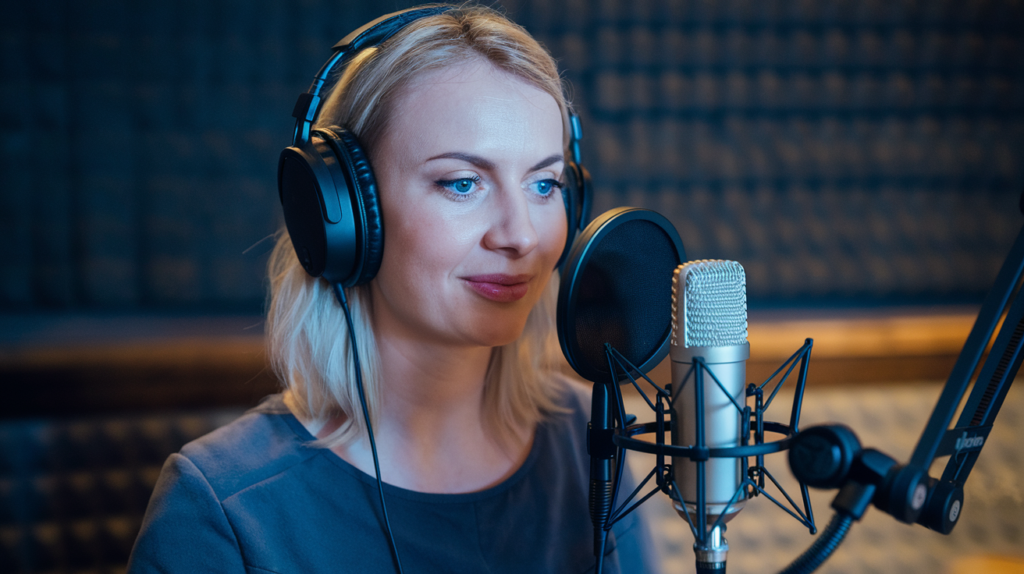Key Takeaways
- Cultural Relevance is Key: Effective video localization for a Polish audience requires understanding and integrating local customs, traditions, and values to create authentic connections.
- Linguistic Nuances Matter: Utilizing native speakers and familiar dialects ensures the message is clear and resonates emotionally with viewers.
- Optimize Visual Content: Tailor visuals to reflect Polish culture by incorporating recognizable landscapes, symbols, and relevant scenarios that enhance viewer engagement.
- Strategic Use of Subtitles and Dubbing: Employ concise subtitles or immersive dubbing with skilled voice talent to provide clarity while keeping viewers engaged without distractions.
- Address Technical Challenges: Be aware of potential technical barriers such as format compatibility and audio quality; investing in the right tools can streamline the localization process.
- Utilize Professional Resources: Collaborate with experts in translation, localization, and voice talent casting to ensure high-quality content that connects effectively with your target audience.
Have you ever wondered how to truly connect with a Polish audience through video? Video localization isn’t just about translating words; it’s about crafting an experience that resonates culturally and emotionally. As the demand for engaging content skyrockets, understanding the nuances of Polish audience video localization becomes essential.
Imagine your videos reaching viewers who feel like you’re speaking directly to them. By localizing effectively, you can break down language barriers and create a genuine connection that boosts engagement and loyalty. Whether you’re a brand looking to expand your reach or a creator eager to share your message, mastering this art can make all the difference in capturing hearts—and views—in Poland.
Understanding Polish Audience Video Localization
Video localization for a Polish audience requires more than just translating scripts. It’s about creating culturally relevant content that resonates with viewers emotionally. Engaging visuals, local idioms, and relatable scenarios play a vital role in making your video appealing.
When you think about voiceovers, consider how the choice of voice talent impacts viewer perception. A native Polish voice actor can convey nuances and cultural references that might go unnoticed by non-native speakers. Their familiarity with local dialects and expressions enhances authenticity, making your content feel more genuine.
Localization also involves adapting humor and social norms to fit the Polish context. What works in one culture may not translate effectively in another. For instance, jokes or references familiar in other regions might confuse or alienate Polish viewers. Tailoring your message ensures it connects deeply with the audience.
Incorporating localized graphics is essential too. Use visuals that reflect Poland’s unique landscapes or urban settings to create an immediate sense of belonging for viewers. This approach helps establish a connection between your brand and the audience, fostering loyalty.
Lastly, testing your localized content before full deployment provides valuable insights into its effectiveness. Gathering feedback from a diverse group within the target demographic can highlight areas needing adjustment, ensuring maximum impact when you launch.
Investing time in understanding these aspects of video localization pays off significantly by enhancing viewer engagement and facilitating meaningful connections with the Polish audience.
Importance of Localization for Polish Audiences
Localization plays a vital role when targeting Polish audiences. It’s not just about translating words; it’s about creating content that resonates culturally and emotionally. Understanding the intricacies of this audience can significantly enhance viewer engagement.
Cultural Relevance
Cultural relevance is crucial in video localization. You need to consider local customs, traditions, and values to create authentic connections. Using familiar scenarios or references that Polish viewers relate to fosters a sense of belonging. Integrating localized graphics reflecting Poland’s unique landscapes enhances visual appeal and connection. Engaging visuals paired with relatable content creates an immersive experience that captivates your audience.
Linguistic Nuances
Addressing linguistic nuances ensures your message is clear and impactful. The choice of words can change meanings drastically in different contexts, so using native language speakers helps convey subtleties effectively. Hiring skilled voice talent familiar with local dialects and expressions enriches the narrative, making it feel more genuine. A well-cast voice actor brings depth to characters, ensuring they resonate authentically with viewers while bridging any cultural gaps present in the original material.
Strategies for Effective Video Localization
Video localization demands a strategic approach to resonate with the Polish audience. It involves more than just translating content; it’s about crafting experiences that connect emotionally and culturally. Here are key strategies to enhance your video localization efforts.
Subtitle and Dubbing Techniques
Using subtitles or dubbing effectively can make a significant difference in viewer engagement. When opting for subtitles, ensure they’re concise yet clear, capturing the essence of the original dialogue while fitting cultural context. Keep timing in mind—subtitles should appear long enough for viewers to read comfortably.
Dubbing offers an immersive experience, allowing viewers to engage fully without reading text on-screen. Choosing voice talent who understands local dialects enhances authenticity. A skilled voice actor brings characters to life, making the content relatable and enjoyable. Invest time in casting experienced voice artists who can convey emotion through their performances seamlessly.
Adapting Visual Content
Visual content plays a crucial role in localization as well. Tailor visuals to reflect Polish culture accurately, incorporating familiar settings, symbols, and traditions that resonate with viewers. Use localized graphics featuring Poland’s landscapes or iconic landmarks to create familiarity.
Ensure that visual elements align with spoken language and narrative themes—this cohesion strengthens overall impact. Avoid using generic imagery that might not connect with your audience; instead, highlight aspects unique to Poland. You want your audience not just watching but feeling part of the story you tell.
By focusing on these strategies—effective subtitle and dubbing techniques alongside thoughtful visual adaptation—you’ll foster deeper connections with your Polish audience through meaningful video localization.
Challenges in Polish Audience Video Localization
Video localization for a Polish audience presents several challenges that require careful consideration and strategic planning. Understanding these obstacles is crucial for creating content that resonates effectively.
Technical Barriers
Technical barriers can hinder the video localization process. You may encounter issues related to format compatibility, file sizes, or software limitations during editing and production. Ensuring your team has access to the right tools for subtitling and dubbing is essential. Additionally, optimizing audio quality when integrating voiceovers adds another layer of complexity. High-quality voice talent familiar with local dialects ensures clarity and authenticity in your message, making it vital to invest in skilled artists who understand cultural nuances.
Market Specificity
Market specificity plays a significant role in effective video localization. The Polish market has unique preferences and expectations shaped by its culture and history. Crafting messages that align with local values enhances viewer engagement. You must consider regional differences within Poland as well—what appeals to audiences in Warsaw might differ from what resonates with viewers in Kraków or Gdańsk. Adapting content accordingly helps create a connection with diverse demographics, ensuring your videos speak directly to their experiences.
Navigating these challenges requires an understanding of both technical aspects and market specifics, allowing you to create compelling localized content that truly connects with your Polish audience.
Tools and Resources for Localization
Effective video localization involves utilizing the right tools and resources to ensure quality and cultural relevance. A range of software solutions and professional services can streamline the process, making it easier for you to connect with your Polish audience.
Software Solutions
Several software solutions facilitate video localization, specifically addressing subtitling, dubbing, and audio editing needs. Here are key options:
- Subtitling Software: Tools like Aegisub or Subtitle Edit offer user-friendly interfaces for creating accurate subtitles. These programs allow you to sync text with audio seamlessly.
- Dubbing Tools: Applications such as Adobe Audition or Pro Tools provide advanced capabilities for recording voiceovers that feel natural within your content. These tools enable precise editing to enhance synchronization with visuals.
- Translation Management Systems: Platforms like Lokalise or Crowdin support collaboration among translators, ensuring consistency across all localized versions of your videos.
- Audio Enhancement Software: Programs such as iZotope RX improve sound quality by reducing noise and enhancing clarity in voice recordings.
Using these tools effectively can elevate your localization efforts, creating a polished final product that resonates well with viewers.
Professional Services
Engaging professional services significantly boosts the quality of your localized content. Consider these key service areas:
- Voice Talent Casting: Hiring skilled voice actors familiar with local dialects brings authenticity to your project. Their expertise ensures that nuances in expression match cultural expectations.
- Localization Experts: Collaborating with professionals who specialize in Polish culture helps tailor messages appropriately while maintaining brand integrity.
- Translators: Work with native speakers who understand linguistic subtleties specific to Poland; this approach prevents misinterpretations that could lead to disengagement from potential viewers.
- Audio Production Teams: Involving experienced sound engineers ensures high-quality recordings free from technical flaws—essential for captivating an audience’s attention.
Investing in both robust software solutions and talented professionals creates a seamless experience for you as a creator while delivering engaging content tailored specifically for the Polish market.
Conclusion
Embracing video localization for your Polish audience is a game changer in today’s content landscape. By prioritizing cultural relevance and emotional connection you can create engaging experiences that resonate deeply with viewers. Understanding local customs language nuances and preferences will set your content apart.
Investing in skilled professionals for voice talent and using effective tools for subtitling and dubbing can greatly enhance the quality of your localized videos. As you navigate the unique challenges of the Polish market remember that authenticity and relatability are key to fostering loyalty among viewers.
With thoughtful strategies in place you’ll not only break down language barriers but also cultivate lasting connections that elevate your brand’s presence in Poland.
Frequently Asked Questions
What is video localization and why is it important for a Polish audience?
Video localization involves adapting content not just by translating language, but also by making it culturally relevant. For a Polish audience, this enhances emotional connections and viewer engagement, helping brands resonate more deeply with their target market.
How can I create culturally relevant content for Polish viewers?
To create culturally relevant content, consider local customs, traditions, and values. Use familiar scenarios and images that reflect Poland’s unique landscapes to foster a sense of belonging and connection with the audience.
Why are linguistic nuances important in video localization?
Linguistic nuances are crucial because subtle differences in wording can change meanings significantly. Employing native speakers ensures that these subtleties are conveyed correctly, enhancing clarity and impact in your localized videos.
What strategies should I use for subtitles and dubbing in Polish localization?
Subtitles should be concise and contextually appropriate while avoiding clutter. Dubbing enhances immersion by allowing viewers to engage without needing to read text; therefore, using skilled voice talent familiar with local dialects is essential.
What challenges exist in localizing video content for Poland?
Challenges include technical barriers like format compatibility and audio quality issues. Additionally, understanding the unique preferences shaped by Poland’s culture requires careful adaptation of content to align with local values.
What tools can help with effective video localization?
Tools such as Aegisub for subtitling, Adobe Audition for dubbing, and Lokalise for translation management streamline the localization process. Engaging professional services can further enhance quality through expert voice casting and audio production.
Why should I invest in professional services for video localization?
Investing in professional services ensures high-quality results that resonate better with the audience. Skilled experts bring cultural insights, technical proficiency, and experience that significantly enhance the effectiveness of your localized content.







